
A shoe is an item of footwear intended to protect and comfort the human foot. Though the human foot can adapt to varied terrains and climate conditions, it is vulnerable, and shoes provide protection. Form was originally tied to function, but over time, shoes also became fashion items. Some shoes are worn as safety equipment, such as steel-toe boots, which are required footwear at industrial worksites.

Footwear refers to garments worn on the feet, which typically serve the purpose of protection against adversities of the environment such as wear from rough ground; stability on slippery ground; and temperature.

A bunion, also known as hallux valgus, is a deformity of the MTP joint connecting the big toe to the foot. The big toe often bends towards the other toes and the joint becomes red and painful. The onset of bunions is typically gradual. Complications may include bursitis or arthritis.

Fulk IV, better known as Fulk le Réchin, was the count of Anjou from around 1068 until his death. He was noted to be "a man with many reprehensible, even scandalous, habits" by Orderic Vitalis, who particularly objected to his many women and his influential footwear, claiming he popularized the pigaches that eventually became the poulaine, the medieval long-toed shoe.

Clogs are a type of footwear that has a thick, rigid sole typically made of wood, although in American English, shoes with rigid soles made of other materials are also called clogs.
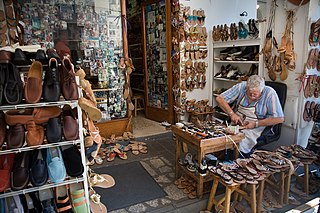
A cordwainer is a shoemaker who makes new shoes from new leather. The cordwainer's trade can be contrasted with the cobbler's trade, according to a tradition in Britain that restricted cobblers to repairing shoes. This usage distinction is not universally observed, as the word cobbler is widely used for tradespersons who make or repair shoes.

Sandals are an open type of shoe, consisting of a sole held to the wearer's foot by straps going over the instep and around the ankle. Sandals can also have a heel. While the distinction between sandals and other types of footwear can sometimes be blurry, the common understanding is that a sandal leaves all or most of the foot exposed. People may choose to wear sandals for several reasons, among them comfort in warm weather, economy, and as a fashion choice. Usually, people wear sandals in warmer climates or during warmer parts of the year in order to keep their feet cool and dry. The risk of developing athlete's foot is lower than with enclosed shoes, and the wearing of sandals may be part of the treatment regimen for such an infection.
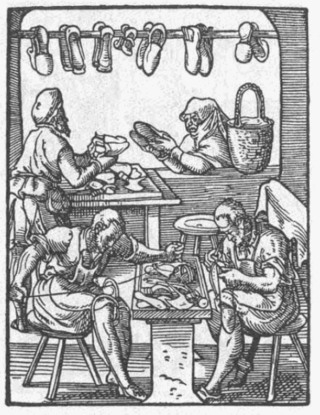
Shoemaking is the process of making footwear.
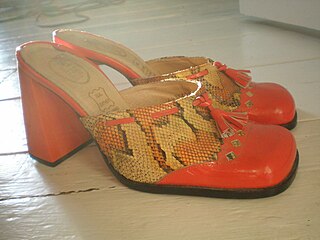
Mule is a style of shoe that has no back or constraint around the foot's heel. The English word mule—originally written moyle—comes from French, which was using it specifically for women's slippers with an open heel since at least 1556. There, mules were bedroom slippers and not worn in public. Through the centuries, mules have changed in style and purpose and are no longer just boudoir shoes but are worn at any time, for any occasion. In addition to Western examples, mules come from cultures such as Turkey and Egypt, and appear in popular culture, from famous paintings to iconic celebrities' shoes.

A sabaton or solleret is part of a knight's body armor that covers the foot.

Winklepickers or winkle pickers are a style of shoe or boot worn from the 1950s onward, especially popular with British rock and roll fans such as teddy boys. The feature that gives both the boot and shoe their name is the very sharp and long pointed toe, reminiscent of medieval poulaines and approximately the same as the long pointed toes on some women's high-fashion shoes and boots in the 2000s. They are still popular in the goth, raggare and rockabilly subcultures.

High-heeled shoes, also known as high heels, are a type of shoe with an upward-angled sole. The heel in such shoes is raised above the ball of the foot. High heels cause the legs to appear longer, make the wearer appear taller, and accentuate the calf muscle.

A liripipe is an element of clothing, the tail of a hood or cloak, or a long-tailed hood. The modern-day liripipe appears on the hoods of academic dress.

Fashion in 15th-century Europe was characterized by a surge of experimentation and regional variety, from the voluminous robes called houppelandes with their sweeping floor-length sleeves to the revealing giornea of Renaissance Italy. Hats, hoods, and other headdresses assumed increasing importance, and were draped, jeweled, and feathered.

Pattens, also known by other names, are protective overshoes that were worn in Europe from the Middle Ages until the early 20th century. In appearance, they sometimes resembled contemporary clogs or sandals. Pattens were worn outdoors over a normal shoe, had a wooden or later wood and metal sole, and were held in place by leather or cloth bands. Pattens functioned to elevate the foot above the mud and dirt of the street, in a period when road and urban paving was minimal. Women continued to wear pattens in muddy conditions until the 19th or even early 20th century.
Pointed or pointy shoe or shoes may refer to:
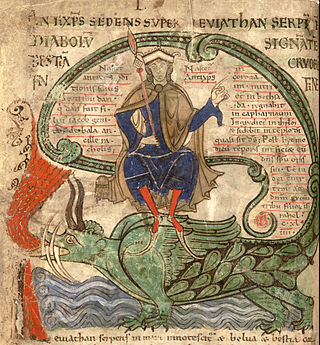
The pigache, also known by other names, was a kind of shoe with a sharp upturned point at the toes that became popular in Western Europe during the Romanesque Period. The same name is also sometimes applied to earlier similar Byzantine footwear.
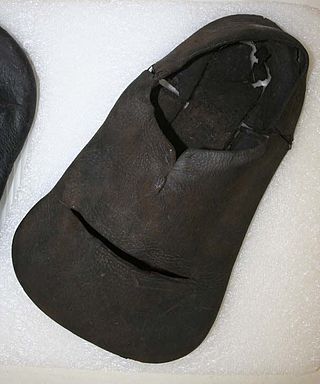
A duckbill, bearpaw or cow's mouth was a style of shoe with a broad toe which was fashionable in the 15th and 16th centuries. This style started with Charles VIII of France, who had an extra toe, and was later worn by Henry VIII of England. It replaced the excessively long toe of the poulaine but also tended to become impractical, as it became enlarged with stuffing and horns and so could be a foot wide, giving the wearer a waddling gait. It might also be adorned with slashes to show the fine lining and sumptuary laws were introduced to restrict all these excesses. Duckbill shoes were rounded like a duck's bill; cowsmouth shoes widened abruptly at the toes; and bearsclaw shoes had slashes parallel to the toes, so the toe could expand laterally.

The toe box is the section of footwear that surrounds the toes on closed-toe shoes. Toe boxes that are too tight can cause injuries and foot deformities, whereas wider toe boxes may be used to treat or prevent common foot conditions such as broken toes, bunions, and Morton's neuroma. Toe boxes come in a variety of shapes and styles of construction, some of which are a matter of fashion, and some of which are designed for specialized functions.



























